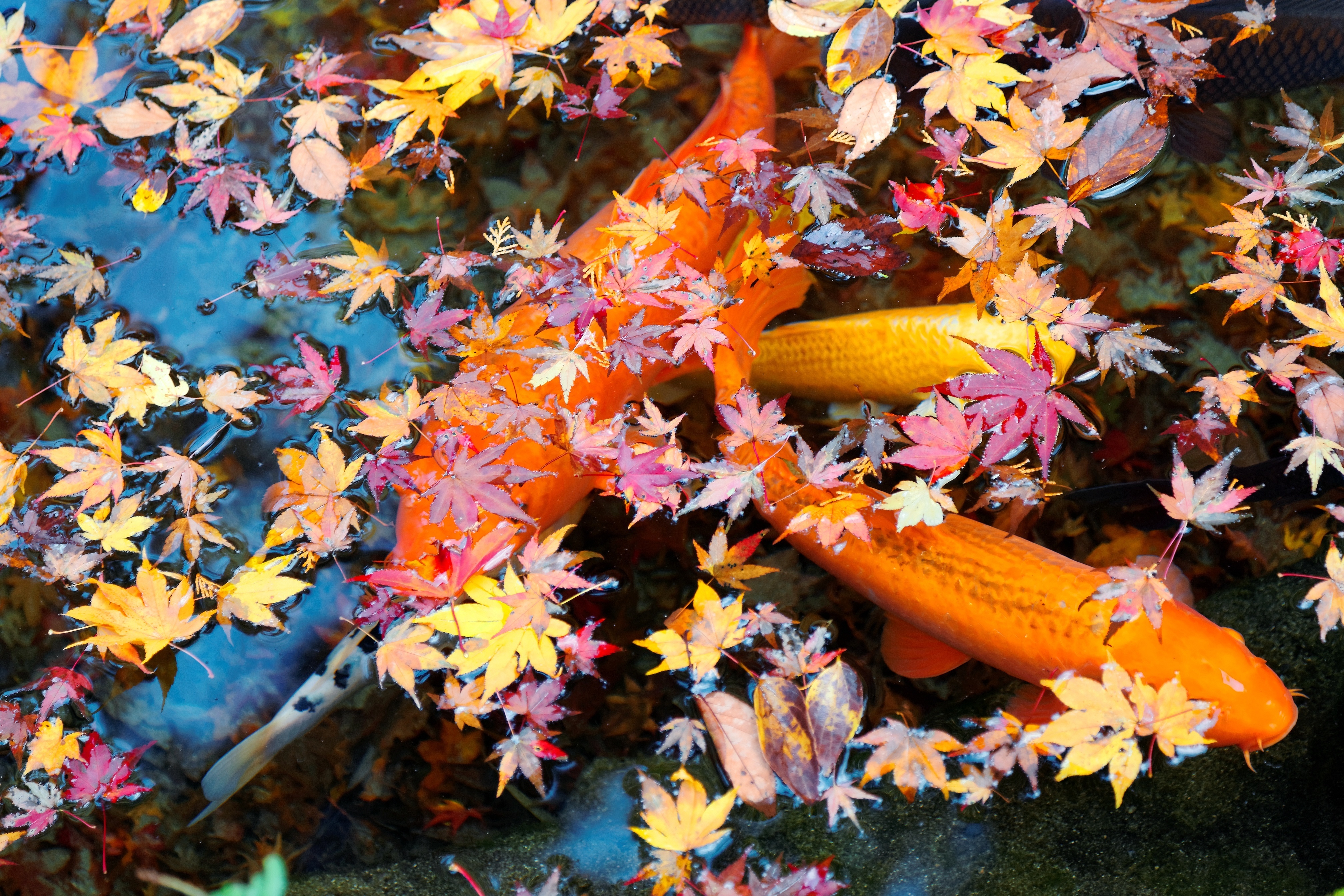Winter Feeding for Pond Fish
Pond fish are poikilothermic (cold-blooded) creatures. This means that their body temperature is controlled by their immediate surroundings, and their behaviour corresponds directly to how warm or cold they are. A drop in water temperature will cause a lack of appetite and a slowing down of their metabolism/reduced need for nutrients, and whilst the fish may still eat, they will be unable to digest the food properly, and this can lead to health complications.
As we move towards autumn and then into winter, the falling temperatures will gradually send pond fish into a state of semi-hibernation, or period of metabolic inactivity. Once the temperature hits 10-15 deg C, some low-protein wheatgerm-based food can be mixed in with their standard high-protein feed. You should gradually increase the percentage of wheatgerm food whilst simultaneously decreasing the high-protein food that you offer the fish, until the temperature reaches a steady 10 deg C (or slightly below) and at which point the fish should be offered wheatgerm based food only. Below this temperature, the fish will start to show less interest in food and will move to the lower reaches of the pond for the winter. Eventually, they will stop coming up for food, and feeding should stop until the warmer weather transpires in the spring.
Wheatgerm is a natural foodstuff with a low protein content that is very easy to digest and is suitable for all pond fish, including koi. In the colder months the fish become sluggish, and if they continue to be fed a diet of protein-rich fish food during this time, there will be excess waste, and a subsequent increase in harmful ammonia. Additionally, because of a slower metabolism, the fish will not be able to digest the food properly, leading to constipation and other serious health problems. Wheatgerm-based food not only passes through the digestive system more easily, but it provides all the nutrition and immune system-boosting vitamins and minerals that your fish need at lower temperatures, whilst helping to keep nitrogenous waste to a minimum.
On the odd unseasonably warm day during the winter, it is possible that the fish may suddenly appear at the surface, begging for food. It is important not to be tempted into feeding at this time, as it would do the fish more harm than good. During the summer, they will have built up adequate fat reserves to live off of during the winter dormancy period, plus there will always be plenty of natural microscopic foodstuffs living in pond itself that the fish can browse upon. They certainly won't starve.
In the spring, when the temperature begins to increase again and the fish start regularly coming to the surface looking for food (usually when it is just below 10 deg C) you can once again provide them with small amounts of the easily digestible wheatgerm to kick-start their metabolism. As the temperature increases further (10-15 deg C), start to mix in some regular food with the wheatgerm, and by the time it is 15 deg C or above, they can be offered wholly standard food again with no wheatgerm.
By helping your pond fish through seasonal temperature transitions, and providing them with the best types of nutrition to support their health at specific times, you'll be rewarded with healthy, vibrant, and active fish with strong immune systems that are ready to fight any parasites or viruses that may show up during the spring.
A pond thermometer will help you to monitor the water temperature of your pond to ensure you are feeding the most suitable food at the right times, and a selection of our wheatgerm-based foods can be found here.




